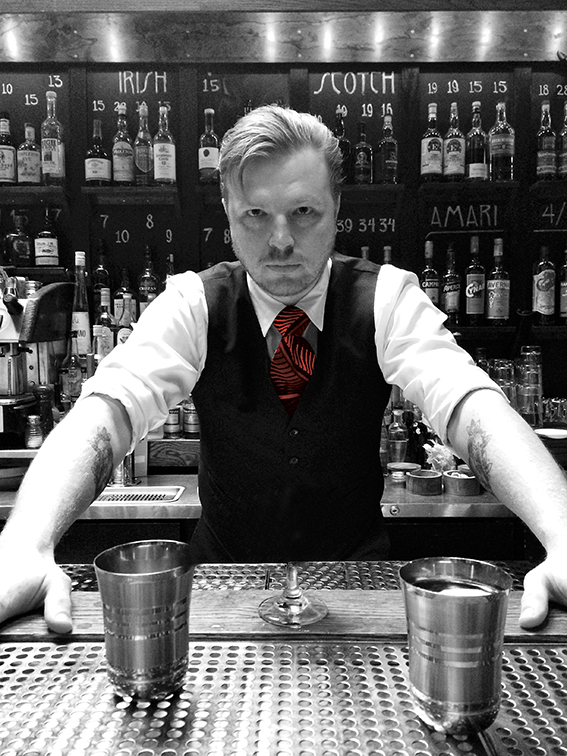ICE. FROZEN WATER. SIMPLE. THE LEAST important ingredient in your cocktail. Used to be an afterthought – grab a bag at the corner store. Now it’s at the forefront of everyone’s drinking mind. Smoked ice. Branded ice. Flavoured ice. Coloured ice. Ice as a performance element in your drink. There has been a serious ice renaissance in the cocktail world over the past 15 years and it started with one man and one place. Sasha Petraske and his oft-imitated Milk & Honey in New York City.
In 1999 Petraske opened what was to become the single most important cocktail bar in the history of ice. Collins glasses were filled with booze and long, square rods of ice. Rocks drinks were served on massive hand-hewn icebergs. Drinks were shaken with one solid chunk instead of a lot of small cubes, and stirred with ice cracked by the back of a spoon. In the early days, most of that ice was frozen in-house. It would then be painstakingly broken down by hand before service. Before Petraske, this respect for ice as a cocktail ingredient really only existed in Japan. In fact, in Japan, most bars do not have their own ice machines but rely on delivery services to supply large blocks.
Collins glasses were filled with booze and long, square rods of ice. Rocks drinks were served on massive hand-hewn icebergs. Drinks were shaken with one solid chunk instead of a lot of small cubes, and stirred with ice cracked by the back of a spoon. In the early days, most of that ice was frozen in-house. It would then be painstakingly broken down by hand before service. Before Petraske, this respect for ice as a cocktail ingredient really only existed in Japan. In fact, in Japan, most bars do not have their own ice machines but rely on delivery services to supply large blocks.
In 2011 Petraske protégé Richard Boccato opened what was arguably the first American company to solely provide custom cut ice to cocktail bars and home clients. Hundredweight Ice was born and now supplies many of the best bars in New York City with crystal clear ice cut to exact size and specification. Still a going concern, it has been imitated both domestically and internationally, with friends visiting the Queens operation and taking these methods home with them.
Fresh Kills, where I work now, employs a simple ice methodology born of that first Milk & Honey programme. We use five types of ice: rocks, Collins, shaking, stirring and pebble. Our large rocks and Collins spears are used for presentation in the glass and, in the case of rocks, the main source of water content in an Old Fashioned-style cocktail. Shaking ice cubes are smaller than rocks, but large enough that only one is used to shake a three-and-a-half ounce cocktail to a frothy finish. In a shaken drink, the ice has three purposes – adding water content, chilling the drink and aerating the drink. With a large block in the shaker, you need to shake longer to achieve the desired water content and coldness, which allows for more aeration and a much better mouth feel. Do a side by side with cube ice and taste them yourself.
Out of that simple Milk & Honey programme, we have seen the use of ice evolve at the likes of the Aviary in Chicago. Ice at the Aviary might be in any one of nearly 30 shapes or flavours. It employs a full-time ice chef to develop new concepts and uses for ice in drinks. Often cubes are made from juices or flavoured liquids and melt into the drink as a modifier. Sometimes drinks are shaken on flavoured cubes. In the case of the famous In the Rocks drink, a cocktail is syringed inside an ice sphere, presented to the customer in a glass, then broken with a purpose-built ‘slingshot’ that releases the cocktail.
We’ve come a long way since freezing Collins in re-purposed silicon molds.



